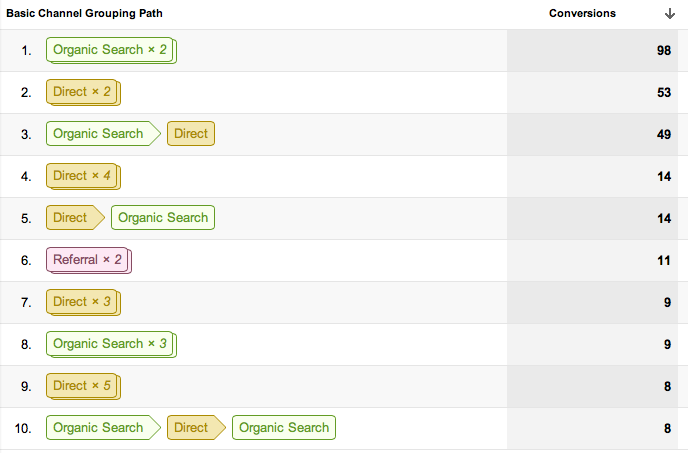Introducing the Blind Spots: Recognizing What Google Analytics Goals Can not Measure
In the realm of digital analytics, Google Analytics stands as a powerful device for tracking and analyzing on-line customer communications. Comprehending what Google Analytics goals can not gauge is vital for acquiring an extensive view of customer habits and interaction.
Customer Habits on External Platforms
Recognizing exactly how customers interact on exterior platforms is crucial for maximizing online techniques. External systems, such as social networks networks, reference sites, and on-line forums, play a substantial duty in driving traffic to a business's website. By examining customer habits on these platforms, businesses can get valuable insights right into the effectiveness of their marketing efforts and the choices of their target audience.
One secret element of customer habits on exterior platforms is the referral source. By tracking where the customers are originating from, companies can recognize which platforms are driving the most traffic to their web site. This details can aid companies assign their sources better, concentrating on the systems that yield the most effective results.

Offline Interactions and conversions
Assessing customer actions on external systems gives useful insights into online strategies; however, considering offline conversions and communications is equally imperative for a detailed understanding of a business's overall efficiency. While Google Analytics succeeds at tracking online interactions, it drops brief in catching the complete consumer trip that often consists of offline touchpoints. Offline conversions, such as in-store acquisitions or phone questions, play a considerable function in many organizations' success. Neglecting these communications can lead to a distorted sight of the efficiency of advertising projects and total service performance.

Acknowledgment Beyond Last Click
When delving into the realm of electronic advertising and marketing analytics, it becomes necessary to look beyond the single touchpoint of the last click for a much more detailed understanding of acknowledgment. While Google Analytics gives valuable insights into individual habits, counting only on last-click acknowledgment can be restricting - what data is google analytics goals unable to track. Acknowledgment versions that go past the last click offer a more nuanced view of the customer journey, considering all the touchpoints that result in a conversion
Acknowledgment past the last click enables marketing professionals to designate credit to numerous communications along the conversion course, providing a look at this site clearer photo of the performance of various advertising channels. By discovering multi-touch attribution models such as straight, time degeneration, or position-based attribution, companies can much better designate their advertising and marketing spending plans and enhance their techniques for optimal effect.
Understanding the impact of each touchpoint in the conversion procedure is critical for making educated decisions and maximizing ROI. By embracing acknowledgment beyond the last click, look what i found businesses can get deeper understandings into consumer habits and tailor their advertising efforts much more effectively.
Cross-Device and Cross-Browser Monitoring

In a similar way, cross-browser monitoring enhances cross-device tracking by capturing individual habits as they switch over in between various internet internet browsers. Comprehending exactly how customers connect with websites on various browsers can assist marketing experts optimize their online experiences to guarantee consistency and performance across different platforms.
Qualitative Data and User Intent
Recognizing customer intent via qualitative data analysis is critical for creating targeted electronic advertising and marketing techniques that reverberate with the requirements and preferences of the target audience. Qualitative data provides insights right into the 'why' behind user actions, shedding light on motivations, feelings, and choices that quantitative data alone can not record. By assessing individual comments, comments, and communications, marketing experts can reveal useful info about customer intent, allowing them to customize their messaging, material, and offerings to better straighten with what their target market is seeking.
Qualitative information likewise helps in understanding the context in which users involve with a site or app. This contextual understanding makes it possible for marketing professionals to produce even more pertinent and individualized experiences, ultimately driving greater engagement and conversion prices. By delving right into individual intent with qualitative information analysis, organizations can get a deeper understanding of their target market, leading to extra efficient marketing approaches that satisfy customers' requirements and assumptions.
Conclusion
To conclude, Google Analytics goals have constraints in gauging customer actions on outside systems, offline conversions, attribution beyond last click, cross-device and cross-browser monitoring, and qualitative data connected to customer intent. what data is google analytics goals unable to track. It is essential for organizations Continued to be knowledgeable about these dead spots in order to supplement their information analysis with other tools and techniques to obtain a more detailed understanding of their target market and improve their general electronic marketing methods
By assessing user habits on these systems, organizations can gain beneficial insights into the efficiency of their advertising initiatives and the choices of their target audience.
Assessing user behavior on exterior platforms offers useful understandings right into on-line approaches; nonetheless, thinking about offline conversions and interactions is similarly essential for an extensive understanding of a business's general performance.In digital marketing analytics, relocating past last-click acknowledgment to check out cross-device and cross-browser monitoring is necessary for obtaining an all natural understanding of customer communications across numerous platforms and gadgets. By evaluating individual comments, comments, and communications, online marketers can uncover important information about customer intent, permitting them to customize their messaging, material, and offerings to better straighten with what their target market is looking for.
By delving into customer intent with qualitative data analysis, organizations can obtain a much deeper understanding of their target audience, leading to a lot more efficient marketing strategies that fulfill individuals' needs and assumptions.